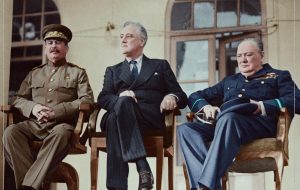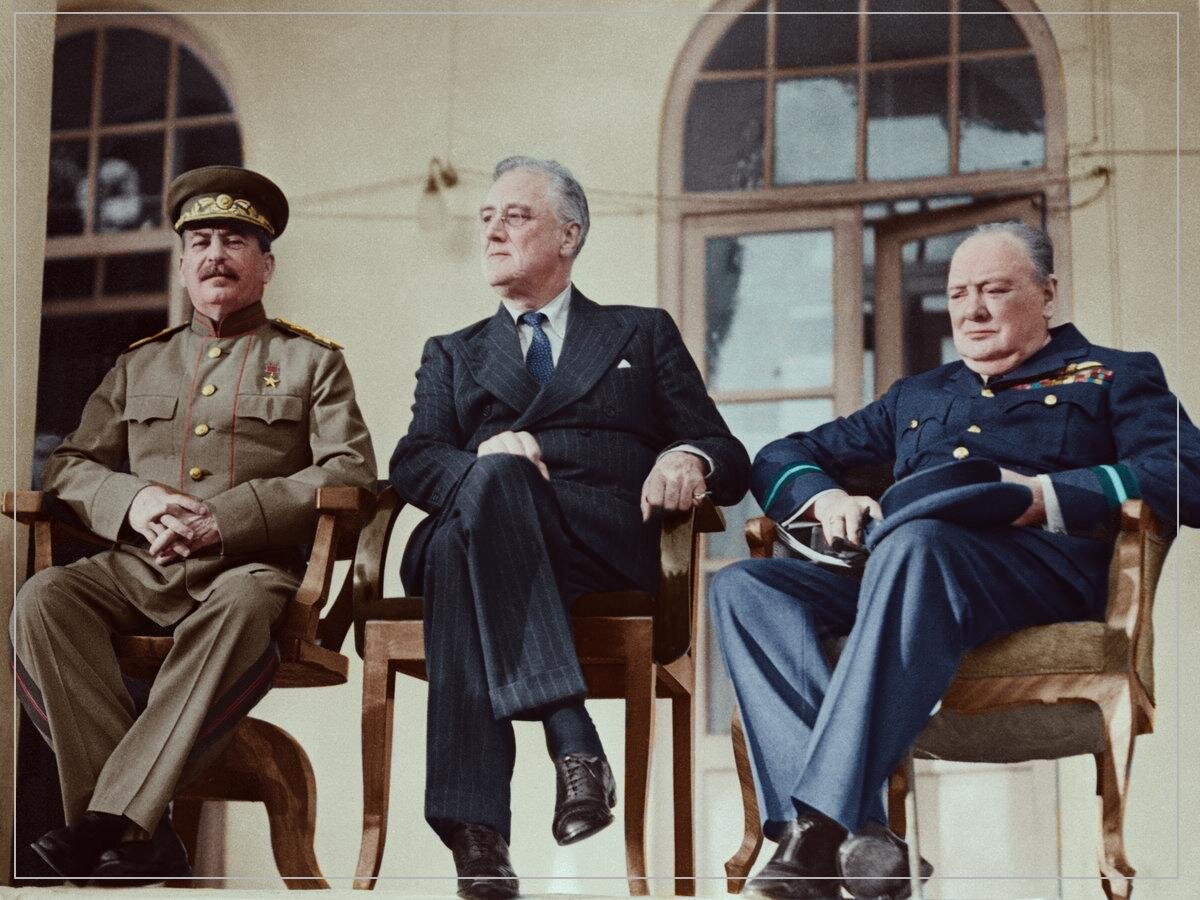The Tehran Conference: a lingering wound on Iranian sovereignty
TEHRAN – Iran boasts one of the world’s oldest civilizations, its history stretching back millennia. In the modern era, however, the country has often been kept on the back foot, with the 20th century in particular marked by numerous instances of subjugation and national humiliation. While Iran today asserts its independent sovereignty and projects military


TEHRAN – Iran boasts one of the world’s oldest civilizations, its history stretching back millennia. In the modern era, however, the country has often been kept on the back foot, with the 20th century in particular marked by numerous instances of subjugation and national humiliation.
While Iran today asserts its independent sovereignty and projects military and security capabilities beyond its borders, this has not always been the case. From the collapse of the Afsharid dynasty in 1796 until the 1979 Islamic Revolution, Iran frequently faced periods of external vulnerability and diminished autonomy in the face of Western aggression.
One of the most glaring instances of Iran’s autonomy, sovereignty, and integrity being violated occurred during World War II: the Tehran Conference, an event that continues to anger many Iranians to this day.
Allied leaders get together in Tehran
Four years into World War II in November 1943, when the German army and its ally Italy (Axis powers) had been defeated on all fronts, leaders of the Allies consisting of American President Franklin D. Roosevelt, Prime Minister of the Soviet Union Joseph Stalin and Prime Minister of the United Kingdom Winston Churchill decided to hold a meeting in the Iranian capital of Tehran to coordinate their war strategies and discuss the post-war era.
In Iran, the young Shah Mohammad Reza Pahlavi had replaced his father Reza Shah, who had been sent into exile back in 1941 following the Anglo-Soviet invasion and partial occupation of his country.
Iran had no idea about the summit
Roosevelt, Churchill, and Stalin came to Tehran without previously informing Iran about their plan, disregarding the country’s sovereignty and its young ruler Mohammad Reza Shah Pahlavi. The Iranian government had been informed only a few days in advance without saying to Shah’s Prime Minister Ali Soheili about the level of the visiting politicians.
It had been informed to the Iranian side that the U.S. and the U.K. officials were scheduled to go to Tehran by train from the south of the country which was under British occupation, but finally, they arrived for the three-day summit by plane on November 28 with their own troops in charge of their security.
It was claimed that the Tehran Conference (codenamed Eureka) had to remain secret because the Germans had vowed to assassinate the leaders of the three powers through their spies, a claim that later proved to be only speculation.
Those three leaders did not even bother to go to the Shah’s palace in the north of Tehran from the Soviet Embassy in downtown the capital. Mohammad Reza had to go to the Embassy in person to be accepted into meetings with them.
Only the Soviet leader agreed to meet the Shah at his palace on his own terms. He had ordered his guards to be in charge of the security during the visit to the Sa’dabad palace. Stalin was reported to have pressured the Shah to accept to keep in place or increase the influence of Soviet-affiliated political groups inside Iran.
It was Stalin who had offered Tehran, in the first place, to host his meeting with the two other leaders of the major powers due to Iran’s geographical proximity to his country.
In his meetings with the leaders of those countries, the Shah demanded the residence of his father, who had been sent into exile, be moved to somewhere else from Mauritius. The three leaders accepted his request and later Reza Shah was transferred to Johannesburg in South Africa where he died.
Tehran Summit’s outcome
The Tehran Conference was not the only meeting of Allied leaders on the World War as they also held meetings in Cairo, Casablanca, and Yalta.
During the strategy Tehran Summit, the three leaders coordinated their military strategy against Germany and Japan and made a number of important decisions concerning the post-World War II era. The most notable achievements of the Conference focused on the next phases of the war against the Axis powers in Europe and Asia.
The chief agreement reached at the Tehran Conference was on the opening of a “second front” in western Europe at the Soviet leader’s request. With opening a new front, the Nazi Germany would have to pull military assets away from the Eastern Front with the Soviets.
Shah tries to turn the summit into an event in his own favor
It was only four days later, when all the Allied leaders had left Tehran, that the conference hit Iranian newspapers headlines. Much to the Iranian people’s dismay, Shah tried to display the event to consolidate his power inside.
On Iran, which Allied forces were partly occupying, they agreed on a declaration dated December 1, offering guarantees for the postwar independence and territorial integrity of the country and promising postwar economic assistance.
However, soon after the war ended, both the U.K. and the Soviet Union leaders reneged on their promise to respect Iran’s territorial integrity.
Under Russian protection, the separatist groups in Iran’s Azarbaijan and Kordestan provinces declared their self-proclaimed autonomous governments.
The Brits also kept in place their control over Iran’s oil fields in the south.
The Tehran Municipality renamed streets in downtown the capital after the leaders of the Big Three left the country, but they were renamed after national Iranian heroes and events following the pro-independence and freedom Islamic Revolution in 1979.
Shah invited the leaders of those major powers to his 2,500-year lavish celebration of the Persian Empire 28 years later in October 1971 but none showed up.
History has taught Iran valuable lessons
The World War II experience added another deep wound to Iran’s already battered body, the country once again becoming a pawn of Western powers despite its declared neutrality. Between 8 and 10 million Iranians perished in World War I, and a further 3 to 4 million died during World War II. These massive losses of life under the Pahlavi dynasty followed the earlier loss of significant historical territories under the Qajar dynasty.
In a speech on Monday, Leader of the Islamic Revolution Ayatollah Seyyed Ali Khamenei correctly pointed out the reason behind the calamities that befell Iran during the Pahlavi and Qajar eras. “They did not strengthen the nation. When a country is unable to defend itself, this is what happens,’ he told millions of Basiji forces who were watching him live.
Under Ayatollah Khamenei’s leadership, Iran has developed a sophisticated military, including a substantial arsenal of domestically produced missiles, drones, and other advanced conventional weaponry. The country has also formed close alliances with powerful groups and states across the region.
